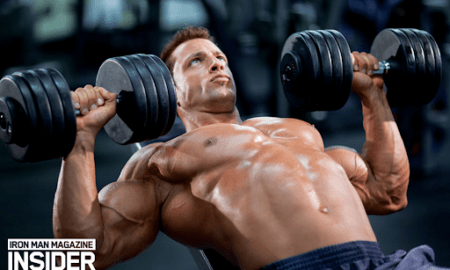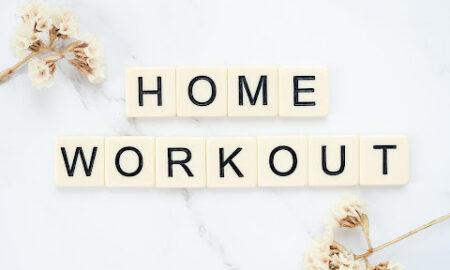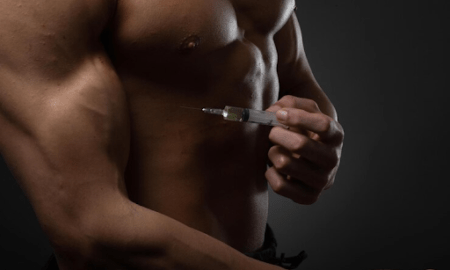On Monday a pair of gifted bodybuilders were working on their chests—regular bench presses, Hammer Strength inclines and pec deck. Their technique was correct, and their effort and focus were high. They were really built, proportionate, lean and very impressive.
At the same time a pair of nongifted bodybuilders were alternating sets while following the same sort of chest routine as the gifted guys. They weren’t built, were not lean and were not impressive. Their effort and focus were high, but the volume of work was excessive for them, and their exercise technique was poor. While the impressive guys didn’t use excessive range of motion or explosive rep speed, the other guys were exaggerating their range of motion and blasting into their reps. If they don’t correct their exercise technique and rep speed pronto, they won’t be training much longer. Effort, passion and focus are required, but they must be properly applied.
During the course of the chest workout an even bigger guy came over to start his workout. He eyed himself up in the mirror, comparing himself with the other guys. The bigger guy flexed his biceps and hit a side-chest pose and was probably satisfied because he was the bigger guy. He was even bigger, though, around his midsection. He was fat, even though he had big muscles underneath the lard. He was concerned with gross size instead of quality size, which is common among bodybuilders.
When a bodybuilder is 190 pounds at 8 percent bodyfat, for example, he looks dramatically better than a guy with the same amount of muscle but with 20 percent bodyfat covering it up. If you can’t see your six-pack, you’re carrying too much bodyfat. While you shouldn’t be focused on getting ripped if your concern is with building bigger muscles, don’t confuse fat with muscle size. Bodybuilding is about appearance first, not the tape measure and scale.
If the bigger guy pared off 30 pounds of fat, he’d look brilliant, but he’s still on a size trip, as he has been for nearly 20 years. It’s killing his appearance, not improving it. Because he hasn’t increased his muscle size for several years despite his best efforts, he’s probably already built as much muscular size as he can. It’s high time he shifted to physique quality. At present he’s probably the only person who’s impressed by his size. After stripping off the 30 pounds of excess lard, he’ll impress even the best bodybuilders at the gym.
On Thursday a young man went into the Smith machine to squat. He cinched on a powerlifting belt and got to work. He started with his feet sufficiently forward to avoid excessive knee flexion, and then after his first set he complained that his back was hurting. If he’d seen himself from a side view, he’d know why: He was rounding his lower back at the bottom of the squat. His solution was to squat with his feet not so far forward. Then he started complaining about his knees. By trying to protect his back, he put excessive stress on his knees.
That’s another example of someone persisting with an obviously harmful exercise and ignoring the warning of pain. “No pain, no gain,” is the stupidest exercise maxim ever concocted. Some gyms, at least in Europe, use the maxim in their names, with pride even.
“No pain, no gain” has left such a mark that many people think they have to endure pain in order to be serious about training. The maxim should really be more like “no healthy discomfort, no gain,” but that doesn’t have a nice ring to it.
You should never experience pain when you exercise. Pain is your body’s warning that something is amiss. Correct the fault that’s causing the problem, or change the exercise to one that’s safe.
Hard, serious training is uncomfortable and at times very uncomfortable, but it’s never painful. Healthy but temporary postexercise muscular soreness is good—provided it wasn’t caused by overtraining. Soreness from injury, however, is another matter.
Discard the “no pain, no gain” insanity. To make good bodybuilding progress, you must train safely. To exercise for the rest of your life—which is the most important exercise goal—you must train safely.
Three young men opposite me were training with zeal on an upper-body-dominated routine. I’d watched them train over many months, but the only lower-body work I’d seen them do was leg extensions, leg curls and seated calf raises. They did major upper-body exercises—benches, inclines, overhead presses, rows and pulldowns—but never any major lower-body exercises. That’s a common error among bodybuilders of all ages. They also undermine their upper-body routines by cluttering them with lots of isolation exercises, spreading their efforts over so much work that they can’t do justice to the major exercises.
If they cut way back and did a simple full-body routine two times a week, with warmups plus two hard work sets for each exercise, and dedicated the next year to getting stronger, using correct exercise technique, they’d be astonished by their progress. IM
Editor’s note: Stuart McRobert’s first byline in IRON MAN appeared in 1981. He’s the author of the new 638-page opus on bodybuilding Build Muscle, Lose Fat, Look Great, available from Home Gym Warehouse (800) 447-0008 or www.Home-Gym.com.




















You must be logged in to post a comment Login